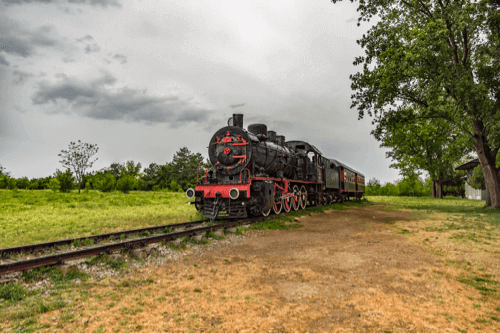
Sustainable Railroad: alternatives to reduce the impact on the environment
The cost of building railroads with more sustainable biases today is more favorable than the permanence of the use of highways. It is popular knowledge that railroads are a means of transporting people and cargo at a lower cost when compared to highways. However, few are aware of the high cost of building a railroad, one of the reasons why they are scarce in Brazil. The disproportion between the two means was created several decades ago through development projects created in the country, which in the course of history reached a limit.
The road sector has reached an environmental and economic exhaustion, in which the emission of gases, the expense of gasoline and the hypertrophy of excess cars is currently generating more problems than solutions. The market is then forced to look again at the railroads, which since 1990 in Brazil, started to acquire a private administration that is renewing and generating new possibilities for the expansion of this sector in more efficient ways.
With an ongoing environmental and economic crisis, the country is looking for logistical alternatives to solve the problem.
Content Index
Green seal for railroads

One of the ways to demonstrate how sustainable railroads can be a more functional means of transport than the highways are the Sello Verde. A label that serves to classify a merchandise as ecologically correct, it has a product or its characteristic, from its creation to its distribution and transport.
This label is currently something very important for the railroads, given that it has already been used in the country in 2020 and has already reached the goal of attracting international financial support structures. With five times the supply on the market, sustainable railroads with the Green Bound label are capable of attracting many more investors, up to possibly attracting $700 billion in resources.
Innovation and efficiency to ensure sustainable railroads

Sustainability is allied with innovation and one of the many qualities it brings to the transport sectors is development. In the last two years, Brazil has seen an opportunity to innovate in the rail network, being the first country in Latin America to have gained international funding for the construction of sustainable railroads, and at the same time increasingly expanding the sector. Since 1997 it has only increased, but through Rumo's private driving, in the last two years the expectation of expansion has also increased, with the projection of an increase in the transport load in Brazil going from 25% to 33% of the total.
One of the reasons for this is the efficiency generated by sustainable railroads. It is proven that they are at the center of international technological development, being present in the most developed countries, reaching the best alternatives. From the tracking of loads, to the construction of polymeric meshes, through the considerable reduction of carbon dioxide, to the inevitable reduction of large vehicles on the highways, avoiding accidents.
Railroad networks made of polymer, for example, are very important to understand how even railroad constructions may no longer be a problem in the future, becoming possible through alignment with the ecological logistics.
Greenhouse gas emission

A sustainable railroad can avoid the emission of tons of carbon dioxide into the atmosphere and this efficiency can become unlimited. Through the flow of products transported on the highways to the railroads, the number of vehicles such as trucks decreases a lot on the roads, consequently reducing the production of gases.
The train also emits less gases, and if you use the electric train, the emission is smaller. Currently in Brazil there is a certain technology that does not allow us to achieve more sustainable means, but simply with an initial attention we can grow this sector and see sustainable railroads growing proportionately and taking over the market.
accidents

Moving away from the literal context of sustainability, the use of railroads also reduces the número de acidentes, to reduce the number of drivers on the roads, as well as the flow of vehicles.
In the country, a serious problem with highways is the fact that many were built in problematic places, both in the sense of being poorly made and in the sense of being close to communities, interfering with civil life. Brazil, being a country that suffers a big problem with this, could see great help in this kind of transformation
Conclusion number of accidents
Sustainable railroads are an efficient alternative in several points. In terms of the environment, it could not only affect other sectors, reducing the emission of gases and vehicles, but also reducing the cost in the production and maintenance of roads and cars, in addition to being able to affect itself, through the invention of new materials for the railroad networks. , new engines that run ecologically, and new types of monetary resources.
In line with the evolution of the sector through private maintenance in recent years, these new forms of sustainable production can also generate technological and logistical innovations, making the country a cradle of production, reaching the interest and infrastructure of international countries, and eliminating historical weights. that accumulate more and more expenses on highways.
In addition to all this, it is also possible to see how sustainable railroads have attracted more people to the sector, both in terms of financing freight transport and in the possible interest in transporting people, as it is a sector with fewer accidents.
Searchs:












